Haute Horlogerie The IWC Way
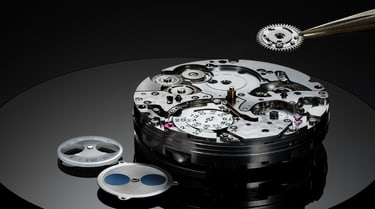
Haute Horlogerie The IWC Way
What does it take to reimagine time?
Portugieser: Signature tones of time
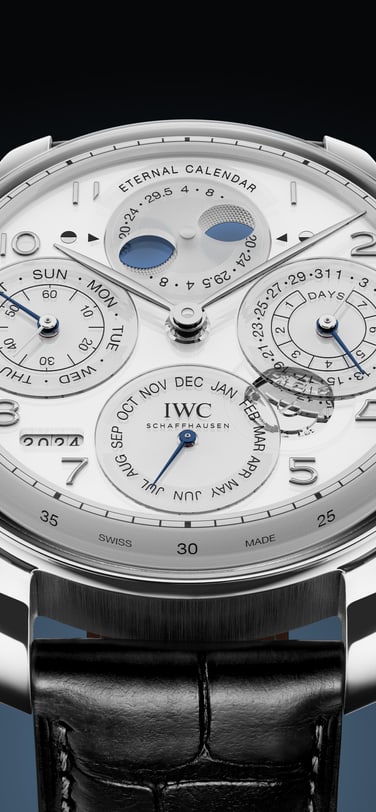
Secular perpetual calendar
The grandmaster - redefinition of eternity
Eternal calendar
The IWC Portugieser Eternal Calendar (Ref. IW505701) takes the perpetual calendar to new heights, proving that Haute Horlogerie never ceases to amaze.
Honored with the 2024 GPHG Aiguille d’Or - one of the industry’s most coveted awards – it precisely mirrors the complexities, irregularities, and exceptions of the Gregorian calendar for thousands of years to come, reaching further into the future than ever before. At its core is a newly engineered 400-year gear, allowing the mechanism to skip three leap years every four centuries, ensuring utmost accuracy until 3999. Encased in platinum and sapphire, the timepiece features a Double Moon™ phase display that will deviate by just one day over a world-record-breaking 45,361,055 years.
Drawing on Kurt Klaus’ ingenious perpetual calendar system, all displays shift in perfect harmony – adjusted effortlessly with a turn of the crown. A timepiece built not just for decades, but millennia.
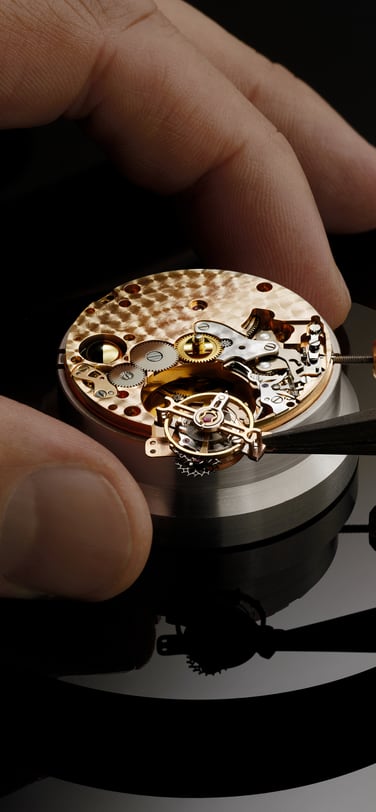
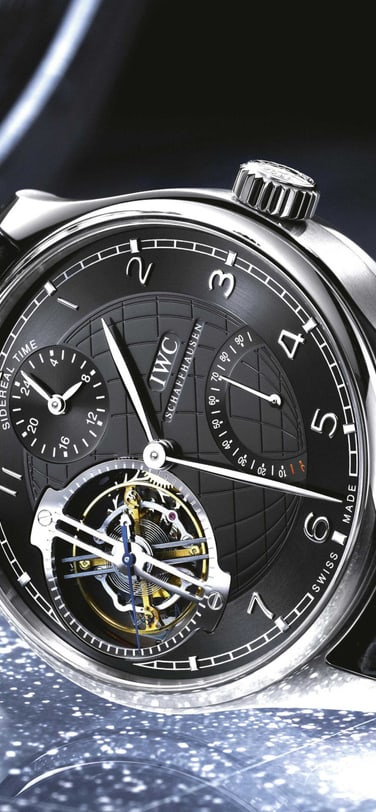
Portugieser Sidérale Scafusia
The Portugieser Sidérale Scafusia (Ref. IW504101) is a stellar masterpiece in Haute Horlogerie. The result of ten years of intensive development and collaboration with specialists across multiple fields, it is the most complicated watch ever made by IWC Schaffhausen.
Beyond its constant-force tourbillon, the watch features a custom star chart, horizon display, and solar time complications, all tailored to the wearer’s location. Its black dial prominently showcases the hour, minute, and Sidérale time in a subdial at 12 o’clock. Sidereal time, a system used by astronomers, tracks the Earth’s rotation relative to the stars, with a day lasting 23 hours, 56 minutes, and 4.091 seconds.
The perpetual calendar, integrated seamlessly into the design, adds to its functionality. Every component, from the horizon to the sunrise and sunset times, is custom-made, assembled, and adjusted with meticulous attention to detail. A watch of exceptional functionality and breathtaking design.
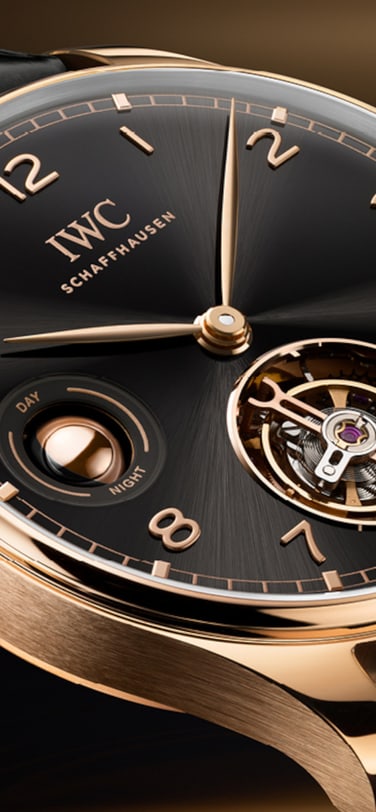
Portugieser Hand-Wound Tourbillon Day & Night
The Portugieser Hand-Wound Tourbillon Day & Night (Ref. IW545901) might not have star charts like the Sidérale Scafusia, but it still shines brightly in the realm of Haute Horlogerie.
Encased in 18-carat Armor Gold® with an Obsidian dial, it features a flying minute tourbillon at 6 o’clock, weighing just 0.675 grams. The innovative day and night display, with a rotating globe, visualizes the eternal cycle of day and night. This feature, developed by a former IWC trainee, reflects our commitment to innovation. Powered by the IWC-manufactured 81925 caliber, it offers 84 hours of power reserve and can be admired through the sapphire case back. The design and craftsmanship showcase IWC’s unique engineering approach, supported by its culture of curiosity.
Finished with a Santoni Leather strap, this timepiece is an embodiment of technical expertise and timeless elegance.
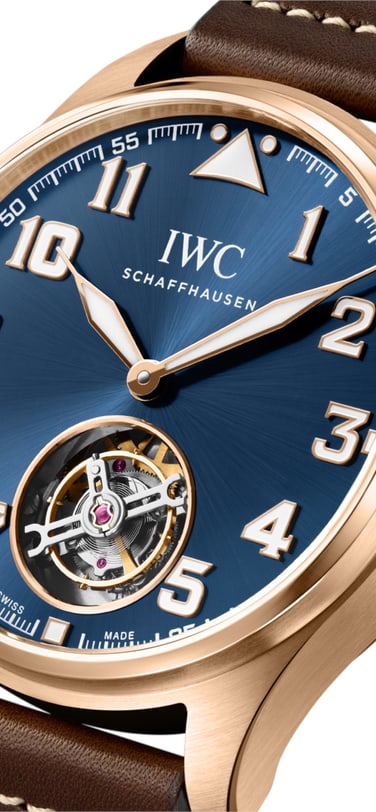
Big Pilot’s Watch 43 Tourbillon Le Petit Prince
IWC Schaffhausen continues its tribute to Antoine de Saint-Exupéry’s world-famous novel The Little Prince with the Big Pilot’s Watch 43 Tourbillon Le Petit Prince (Ref. IW329502).
Limited to 300 pieces, this haute horlogerie timepiece features a flying minute tourbillon, a deep blue sunray dial, and a case and crown made of 18-carat Armor Gold® - an alloy significantly harder than conventional 5N gold due to an improved microstructure.
A stunning rotor, made of solid 18-carat gold and shaped like The Little Prince standing on his asteroid, is visible through the sapphire case back. The 82905 caliber with a Pellaton winding system delivers 80 hours of power reserve.
Precision meets poetry in this anniversary edition, celebrating 10 years of IWC’s Le Petit Prince watches—where craftsmanship and storytelling intertwine in true aviation tradition.
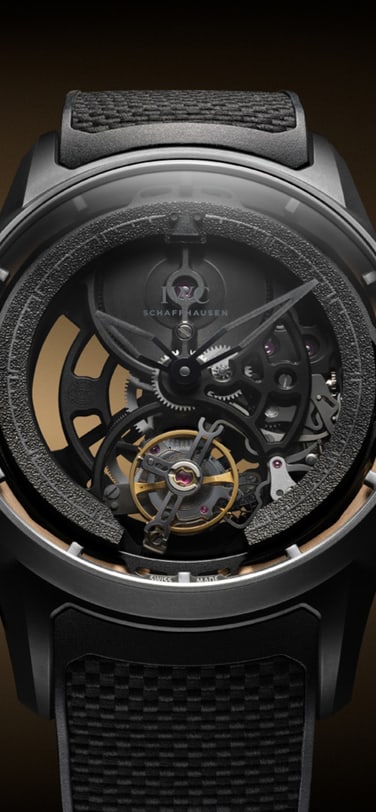
Big Pilot’s Watch Shock Absorber Tourbillon Skeleton XPL
The tourbillon is one of the most sophisticated complications in fine watchmaking. As dozens of miniscule parts have to work together in a confined space, it is particularly vulnerable to shocks and damage. With the Big Pilot’s Watch Shock Absorber Tourbillon Skeleton, IWC’s engineering division XPL pushes the boundaries by combining its patented SPRIN-g PROTECT® shock absorber system with a tourbillon movement for the first time.
First introduced in 2021, the SPRIN-G PROTECT® system uses a cantilever spring to cushion the movement and suspend it inside the case. In the event of an impact to the case, the movement is protected by the compressing spring system, reducing impact forces significantly.
The case and the crown of this watch are manufactured from Ceratanium®, an IWC-developed material that combines the lightness and structural integrity of titanium with a hardness and scratch-resistance similar to ceramic. This highly complex and futuristic Big Pilot’s Watch is fitted with a black rubber strap with a technical pattern, complete with a Ceratanium® pin buckle.